Fulfilling the necessity of protecting your personal or business interests against potential legal claims can be a challenging task. A General Release of Liability Form plays a pivotal role in ensuring this safety net, providing a legally binding agreement that relinquishes an individual or entity from responsibility for potential damages or injuries.
This article will delve into the nuances of this legal instrument, outlining its purpose, usage, key components, and how it effectively mitigates risk, thereby safeguarding your peace of mind in various personal or business transactions.
Table of Contents
What is a release of liability form?

A Release of Liability Form, also known as a Waiver or Release Agreement, is a legal document that a party signs to waive their right to sue or make claims against another party in the event of an accident, injury, or other incident. This document is typically used to protect a business or individual from legal and financial risk.
The form clearly outlines the potential risks involved in a particular activity or transaction, ensuring that the signing party understands and accepts these risks. Its utility spans across various sectors including, but not limited to, recreational activities, events, rentals, and services. Though it cannot eliminate all legal risks, especially in cases of gross negligence or intentional harm, a well-drafted Release of Liability Form can provide a significant layer of protection against potential lawsuits.
General Release of Liability Form Templates
The General Release of Liability Form is a crucial legal document that transfers the risk of potential legal issues from one party to another. These forms are often used in situations where injuries or damages may occur, such as sports events, construction sites, or in the rental of equipment or property.
By signing this form, one party agrees not to hold the other party responsible for any injuries or damages that may arise. Templates for these forms are incredibly valuable, offering a customizable structure that ensures all necessary clauses are included. They provide a straightforward way to tailor the form to your specific needs, helping to mitigate potential legal risks in a variety of situations. The use of templates for creating a General Release of Liability Form helps in saving time, minimizing errors, and maintaining the legal integrity of the agreement.
Types of liability release forms
Liability release forms take various forms based on the nature of the activities or transactions they govern. The key types are as follows:
General Release of Liability Form
This is a broad type of form that is often used in various scenarios to protect a business or an individual from being sued for an unforeseen incident. It could cover a range of activities such as participating in a sporting event, using a rented space, or partaking in a school field trip.
Auto Accident Release of Liability Form
This is a specific type of form used following a car accident. By signing this form, the injured party agrees not to sue the responsible party for future claims related to the accident. It’s often used in settling auto insurance claims.
Waiver for Participation in an Event or Activity
This form is used when an individual participates in activities that carry a certain amount of risk such as skydiving, horseback riding, or rock climbing. It helps protect the business or organization conducting the event from legal action if a participant gets injured.
Property Damage Release Form
This is used when there is damage to property, be it personal or real estate. The individual whose property was damaged signs this form to acknowledge receipt of agreed payment for the damage and to relinquish the right to sue at a later date.
Release of Liability for Worker’s Compensation
This form is signed by an employee who agrees not to pursue legal action against the employer after an injury at work, often following a worker’s compensation settlement.
Product Liability Release Form
Businesses use this form when selling or distributing products that could potentially lead to user injury. By signing the form, the consumer acknowledges the risks and releases the business from liability.
Medical Release of Liability
This form is used in medical scenarios where a patient consents to a procedure after understanding the associated risks. It protects healthcare providers from liability for the inherent risks involved.
Model Release Form
In the media industry, this form is used when a photographer or a videographer wishes to publish images or videos of individuals. The person featured in the media signs to give consent and to waive any future claims.
Key elements of a general release of liability form
A well-structured General Release of Liability Form should include several key elements to ensure its legal soundness and comprehensiveness. Here are the primary elements:
Identification of the Parties: The form should clearly identify the Releasor (the party agreeing not to sue) and the Releasee (the party being protected from lawsuits). It should include their full names, contact information, and addresses.
Description of the Activity or Transaction: A detailed description of the activity or transaction involved, specifying what it entails and the inherent risks associated with it, should be included. This ensures that the Releasor understands what they’re agreeing to.
Clear Release of Liability Clause: This is the main part of the document. The clause states that the Releasor agrees to not hold the Releasee liable for any injuries, damages, or losses that may occur as a result of participation in the activity or transaction.
Assumption of Risk: This statement ensures that the Releasor acknowledges and accepts the potential risks involved in the activity or transaction.
Indemnification Clause: This element stipulates that if any legal actions are taken against the Releasee related to the activity, the Releasor will cover the costs and potential damages.
Severability Clause: This clause ensures that if any part of the agreement is found to be unenforceable or illegal, the rest of the agreement will still remain valid.
Governing Law: This specifies the jurisdiction or state whose laws will be used to interpret the agreement and handle any disputes.
Signatures and Dates: Finally, both parties should sign and date the document. Depending on local laws, it may also be wise to have the document witnessed or notarized for added legal protection.
Additional Provisions: Depending on the specific circumstances, additional provisions may be included, such as a clause about dispute resolution or an acknowledgement that the Releasor had the opportunity to seek legal advice before signing.
How to Write a Release of Liability
Writing a Release of Liability involves several critical steps. Here’s a step-by-step guide:
Step 1: Understand the Context Start by understanding the nature of the activity, transaction, or event for which the release is required. This understanding will guide the overall content of the form.
Step 2: Identify the Parties Clearly identify the parties involved. This includes the Releasor (the party giving up their right to sue) and the Releasee (the party being protected). Include their full names and contact information.
Step 3: Describe the Activity or Transaction Provide a detailed description of the activity or transaction. Make sure to clarify the scope of the activities that the release will cover. This can include location, timing, nature of the activity, and any other pertinent details.
Step 4: State the Release of Liability Clearly articulate the release of liability. The Releasor must agree not to hold the Releasee responsible for any injuries, damages, or losses that might occur due to the activity or transaction. This clause should be clear and explicit.
Step 5: Include an Assumption of Risk Add an assumption of risk statement. This confirms that the Releasor understands and accepts the potential risks associated with the activity or transaction.
Step 6: Indemnification Clause Include an indemnification clause, if applicable. This stipulates that if any legal actions are taken against the Releasee related to the activity, the Releasor will cover the costs and potential damages.
Step 7: Add a Severability Clause Incorporate a severability clause. This means that if any portion of the agreement is found to be unenforceable or illegal, the rest of the agreement remains in effect.
Step 8: Specify the Governing Law Identify the state or jurisdiction whose laws will govern the agreement and any disputes that arise from it.
Step 9: Include Signatures and Dates Ensure that all parties sign and date the document. Depending on local laws, it might be necessary to have the document notarized or witnessed.
Step 10: Review and Consultation Consider having the document reviewed by a legal professional to ensure it provides necessary protections and adheres to local laws. Also, give the Releasor the opportunity to review the document and seek their own legal advice before signing.
Sample Release of Liability Form Template
GENERAL RELEASE OF LIABILITY FORM
THIS AGREEMENT is entered into on this ___ day of _, 20, by and between (Releasor’s Full Name), hereinafter referred to as the “Releasor,” and (Releasee’s Full Name), hereinafter referred to as the “Releasee.”
1. IDENTIFICATION OF PARTIES Releasor: (Releasor’s Full Name) Address: (Releasor’s Full Address)
Releasee: (Releasee’s Full Name) Address: (Releasee’s Full Address)
2. DESCRIPTION OF ACTIVITY OR TRANSACTION The Releasor hereby agrees to participate in the following activity or transaction: (Detailed Description of the Activity or Transaction).
3. ASSUMPTION OF RISK The Releasor understands and acknowledges that the activity or transaction involves inherent risks, including but not limited to (List of Potential Risks), and voluntarily assumes these risks.
4. RELEASE OF LIABILITY The Releasor does hereby release and forever discharge the Releasee, its agents, employees, officers, directors, affiliates, successors and assigns, of and from any and all claims, demands, debts, contracts, expenses, causes of action, lawsuits, damages, and liabilities, of every kind and nature, whether known or unknown, in law or equity, that the Releasor ever had or may have, arising from or in any way related to the said activity or transaction, provided that this waiver of liability does not apply to any acts of gross negligence, or intentional, willful, or wanton misconduct.
5. INDEMNIFICATION The Releasor, to the extent permitted by law, agrees to indemnify and hold the Releasee harmless from any and all claims, causes of action, damage judgments, costs or expenses, including attorney fees which in any way arise from the activity or transaction which is the subject of this Agreement.
6. SEVERABILITY If any clause, provision, or section of this Agreement is held to be illegal or unenforceable under present or future laws, then such clause, provision, or section shall be fully severable and the Agreement shall be construed and enforced as if such illegal or unenforceable clause, provision, or section had never been part of this Agreement.
7. GOVERNING LAW This Agreement shall be governed by and construed under the laws of the state of (State Name).
8. ACKNOWLEDGEMENT The Releasor acknowledges that they had an adequate opportunity to read this entire document, to consult with legal counsel, and to understand its contents fully before signing.
9. SIGNATURES RELEASOR:
Name
Signature
Date
RELEASEE:
Name
Signature
Date
WITNESS (if applicable):
Name
Signature
Date
FAQs
Who typically uses a Release of Liability Form?
Release of Liability Forms are commonly used by businesses, organizations, event organizers, sports clubs, recreational facilities, and individuals engaging in potentially risky activities or events. They are used to help protect against lawsuits or legal claims.
What is the purpose of a Release of Liability Form?
The main purpose of a Release of Liability Form is to ensure that the party participating in an activity or event understands and acknowledges the risks involved and voluntarily assumes those risks. By signing the form, the participant agrees not to hold the releasing party responsible for any injuries, damages, or losses that may occur.
What are some examples of activities or events that may require a Release of Liability Form?
Examples include but are not limited to: sports activities (such as skiing, rock climbing, or martial arts), recreational activities (such as bungee jumping or skydiving), rental of equipment (such as bicycles or watercraft), participation in volunteer work, and attending events or workshops.
Can a Release of Liability Form completely absolve someone from all liability?
It depends on the jurisdiction and specific circumstances. While a Release of Liability Form can provide a level of protection, there may be exceptions and limitations. It’s important to consult with legal professionals to ensure the form is valid and enforceable in a particular jurisdiction.
Can a minor sign a Release of Liability Form?
In many jurisdictions, minors (individuals under the age of 18) are not legally able to sign binding contracts, including Release of Liability Forms. In such cases, a parent or legal guardian may need to sign on their behalf.
Are Release of Liability Forms only applicable to physical injuries?
No, Release of Liability Forms can cover a wide range of liabilities, including physical injuries, property damage, financial losses, or any other harm that may arise from the activity or event.
Is it recommended to have a lawyer review a Release of Liability Form?
Yes, it is highly advisable to consult with a lawyer when creating or using a Release of Liability Form. Laws regarding liability and enforceability can vary, and legal professionals can ensure that the form is valid, legally binding, and provides adequate protection.
How long is a Release of Liability Form valid?
The validity period of a Release of Liability Form may vary depending on the jurisdiction, activity, or event. Some forms specify a particular timeframe, while others may be applicable indefinitely. It is advisable to include an expiration date or clearly define the duration of the release of liability.








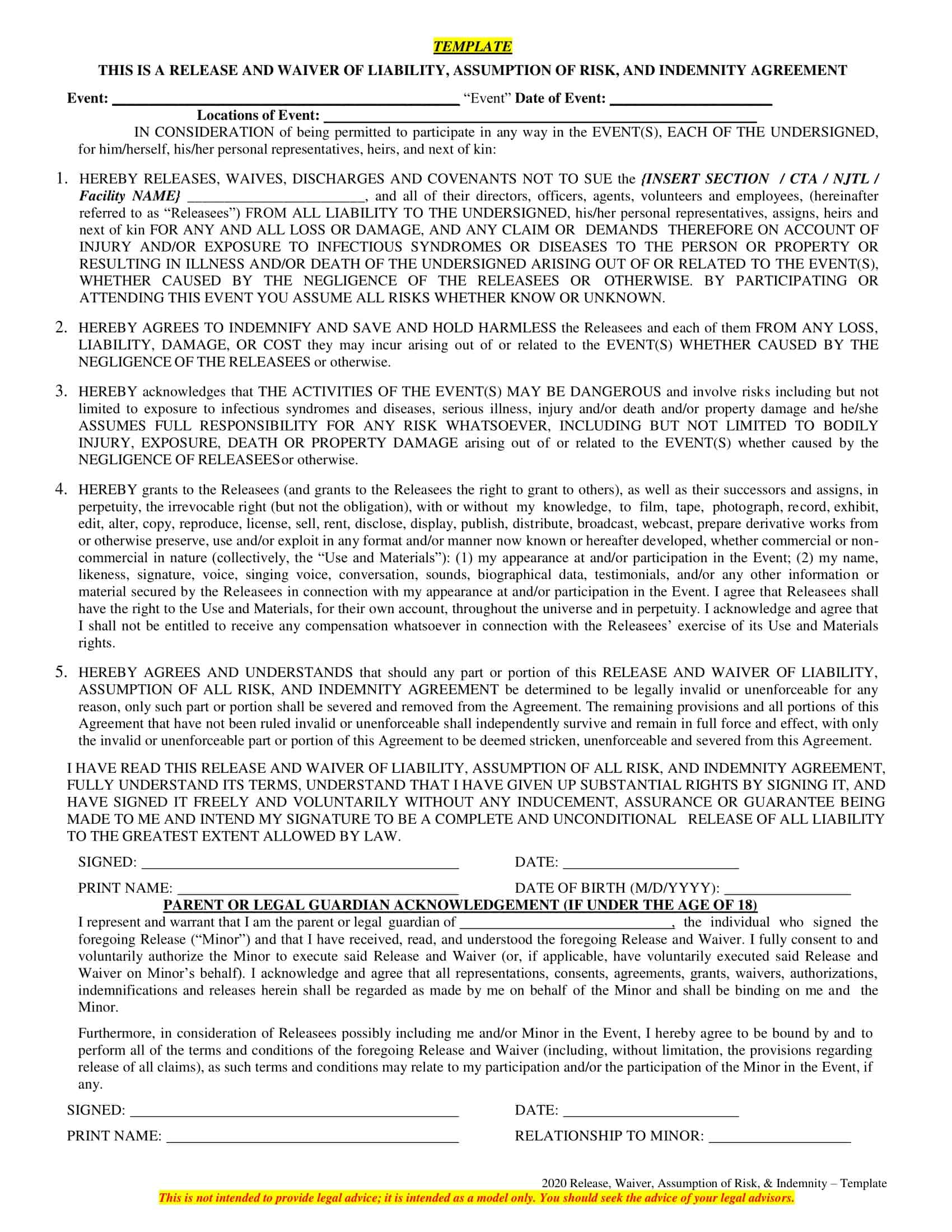


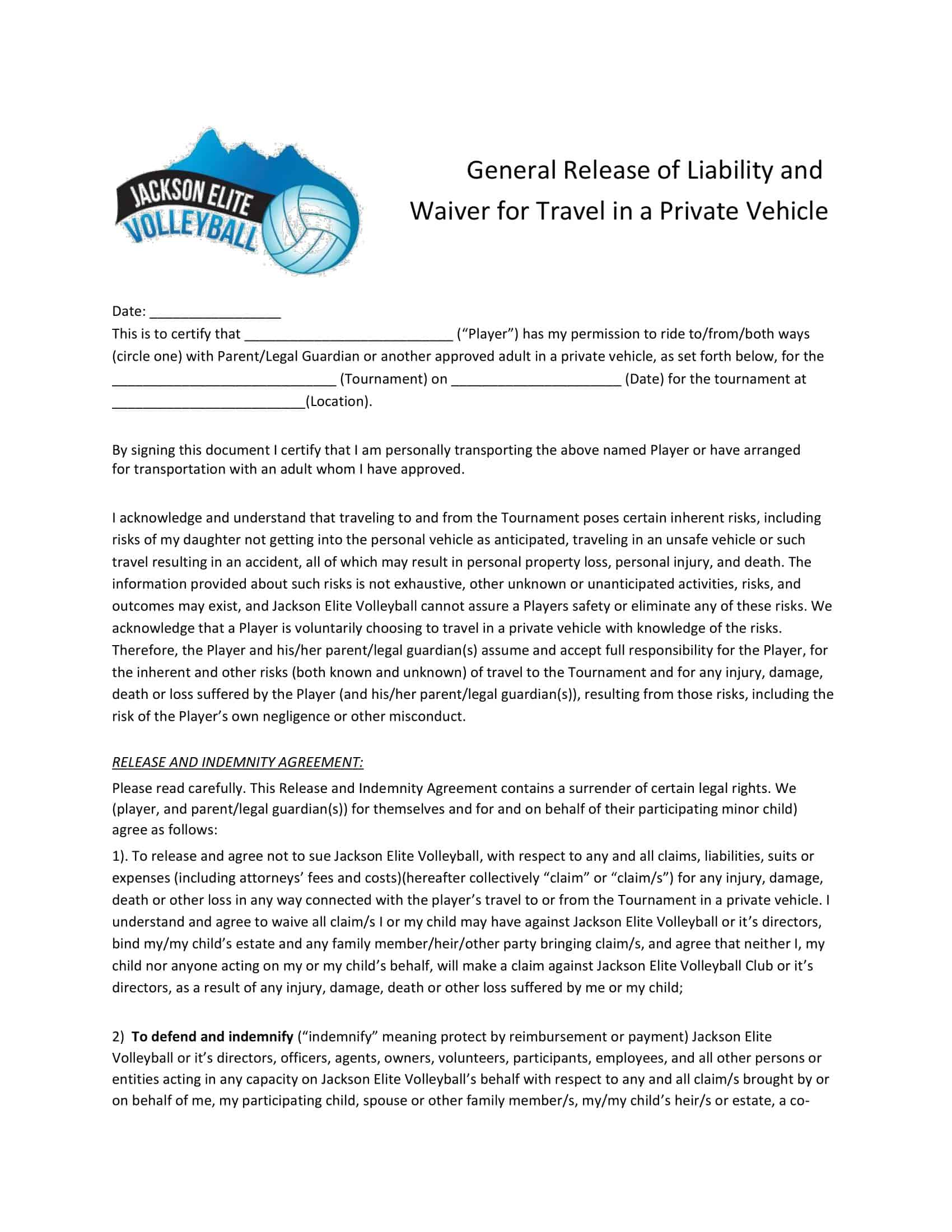


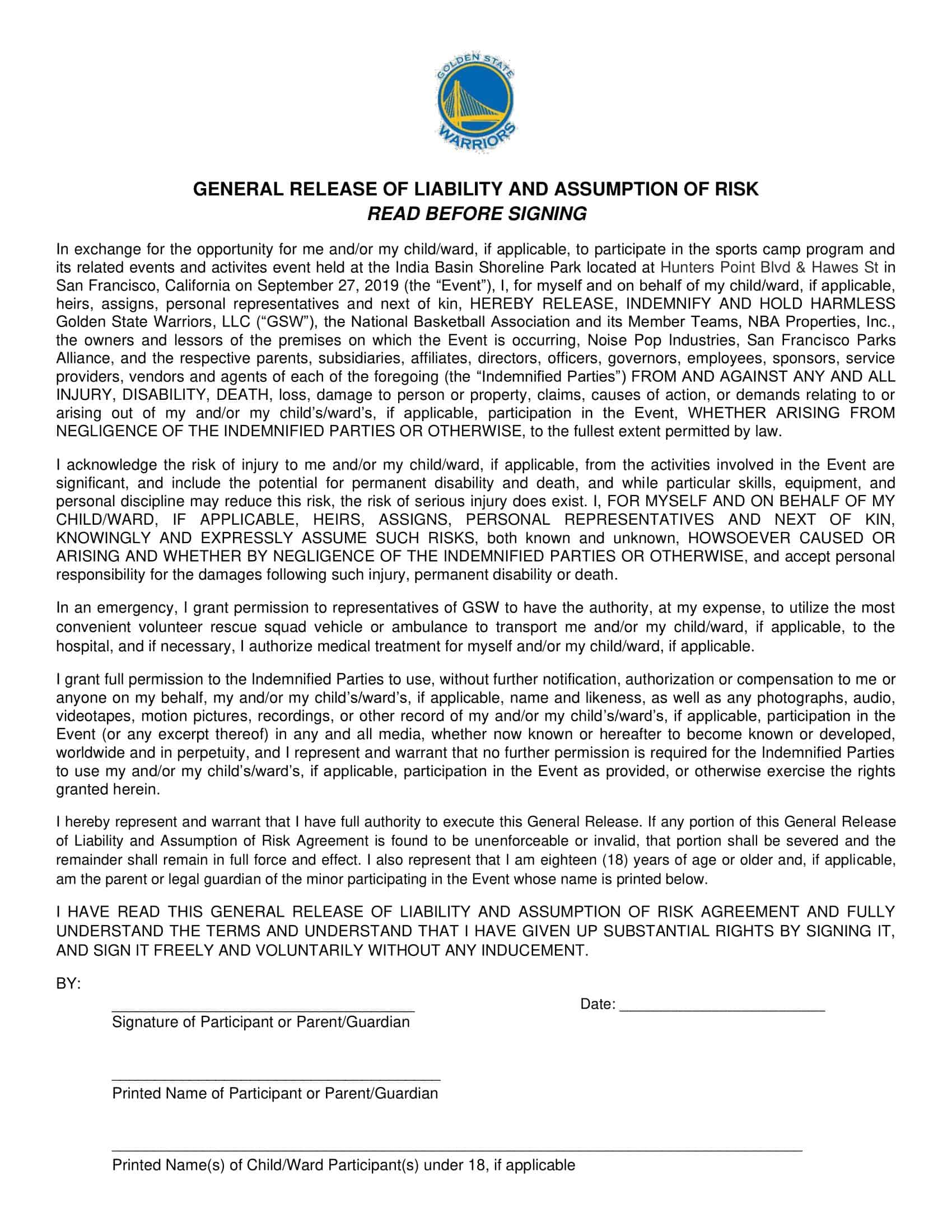




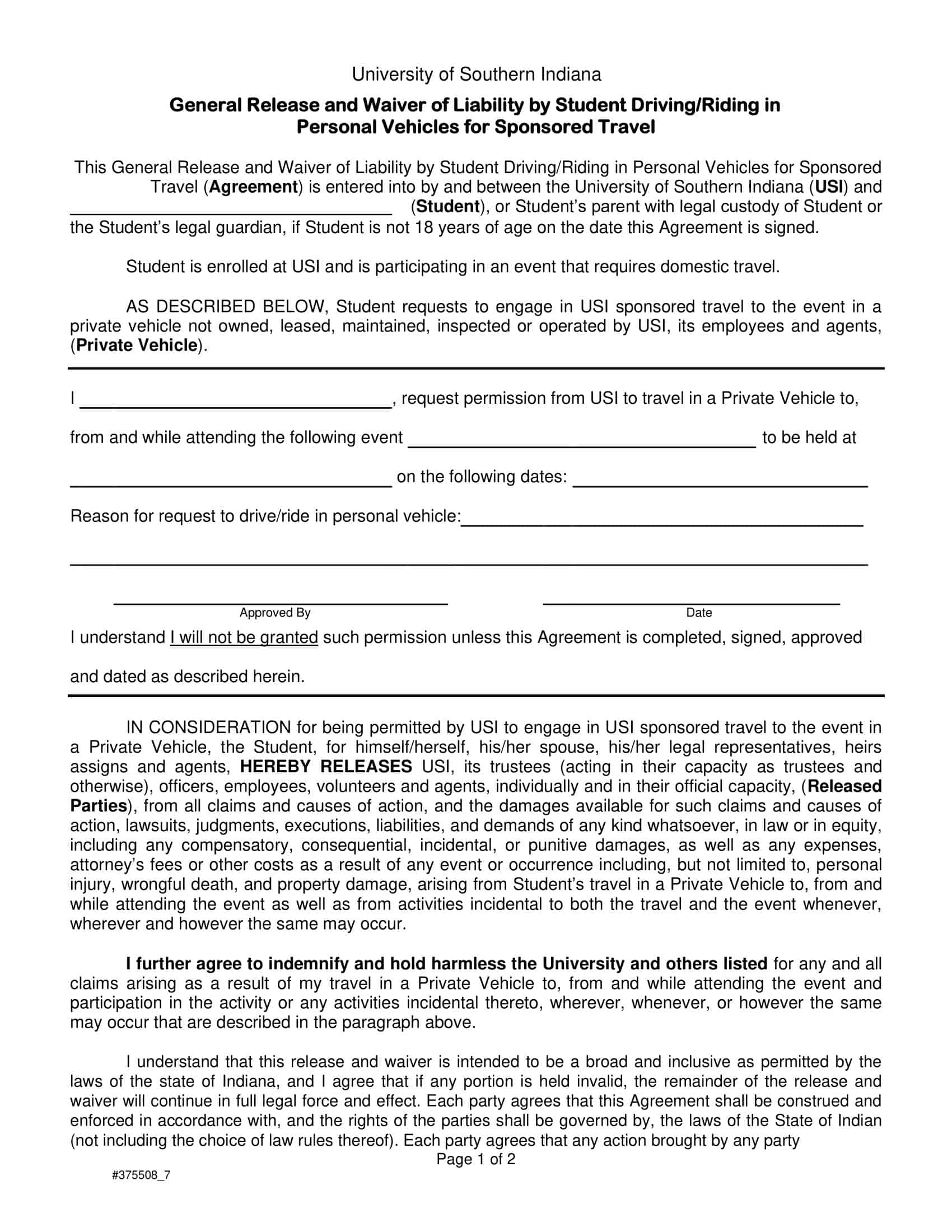
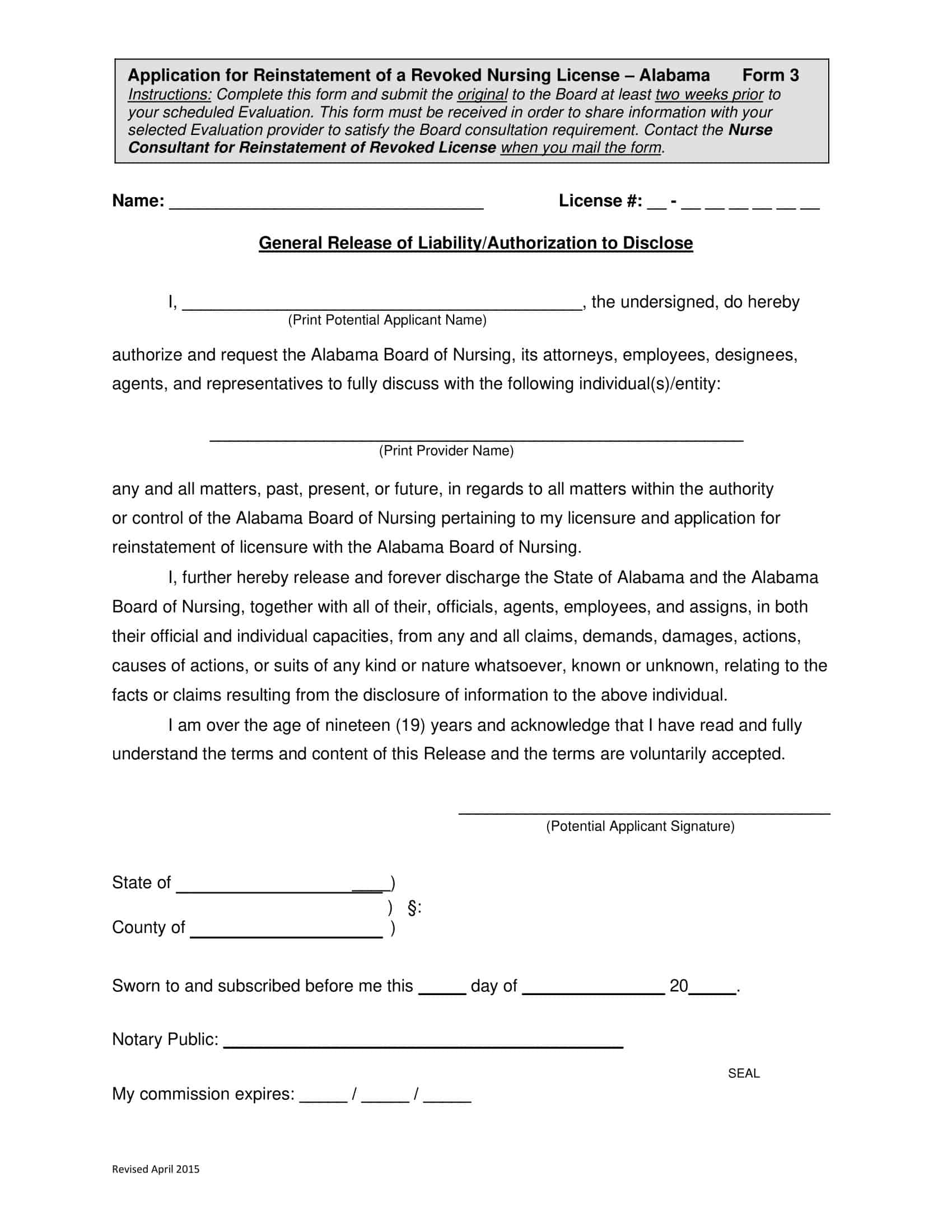




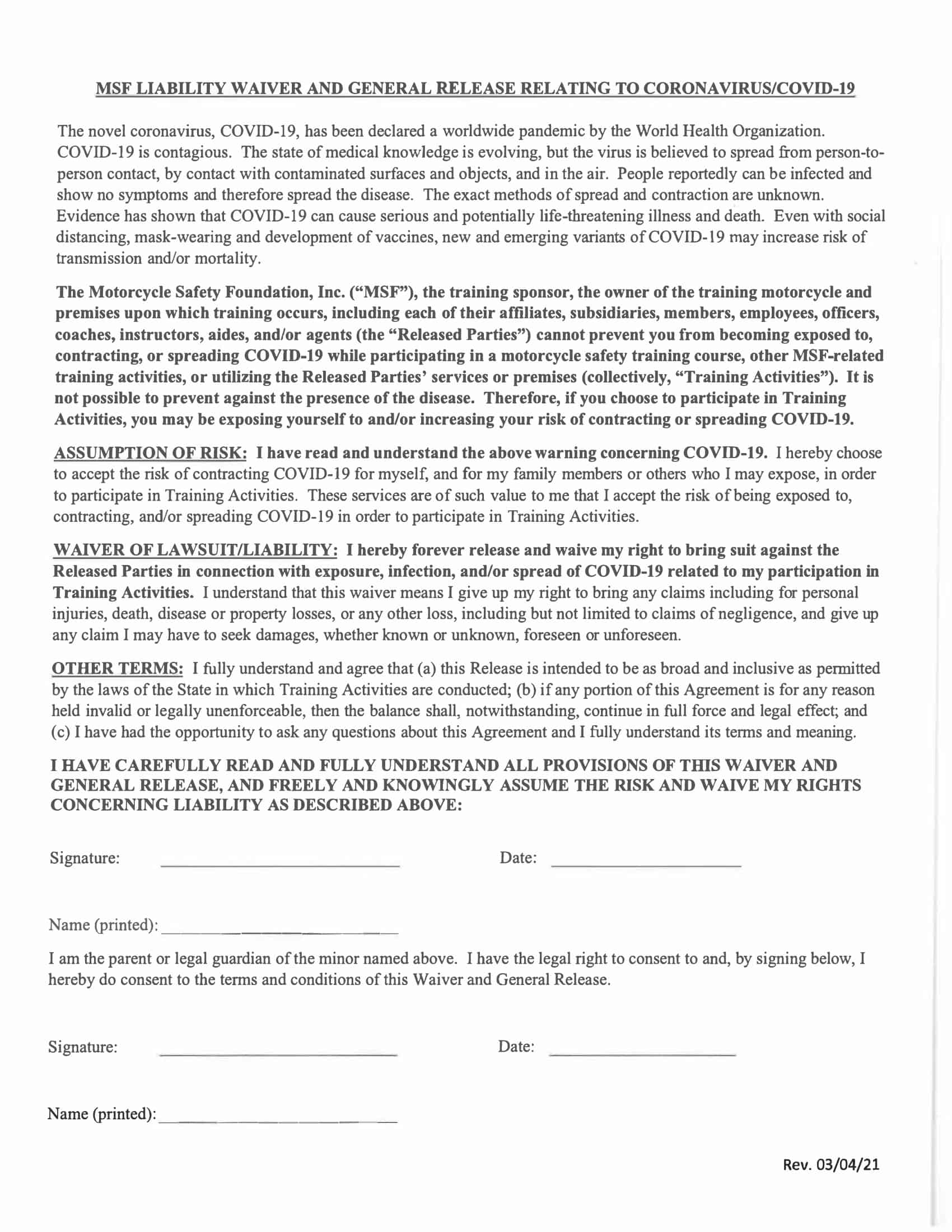
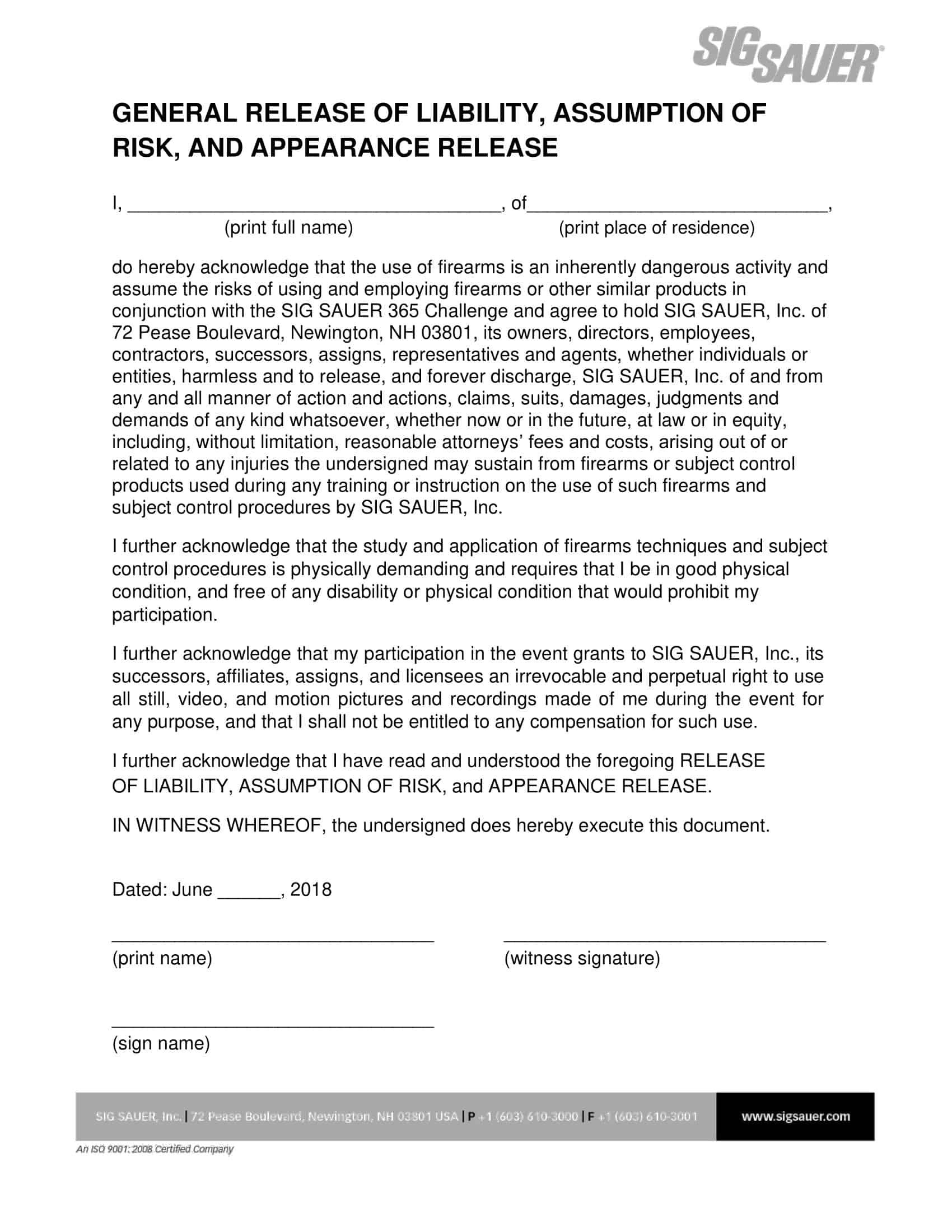
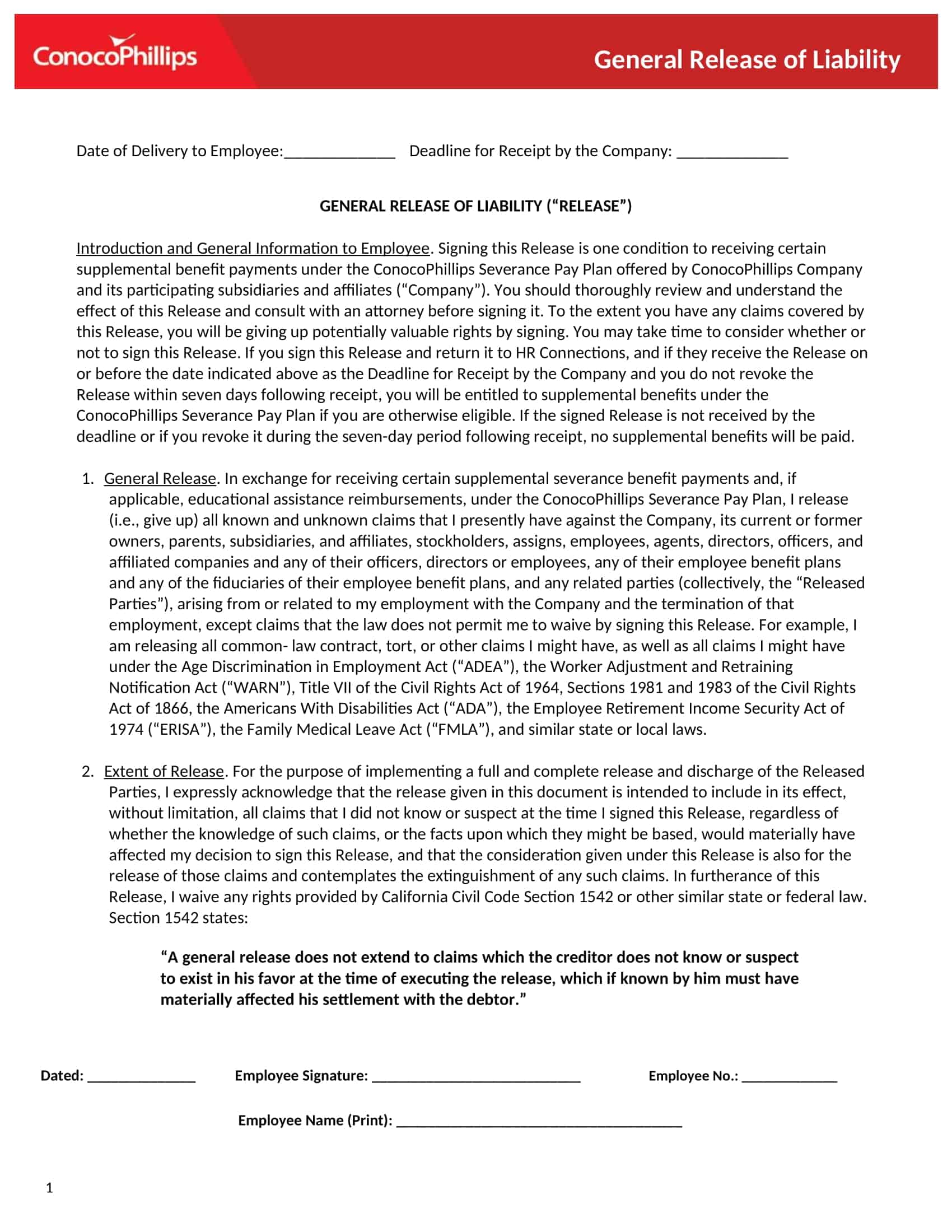



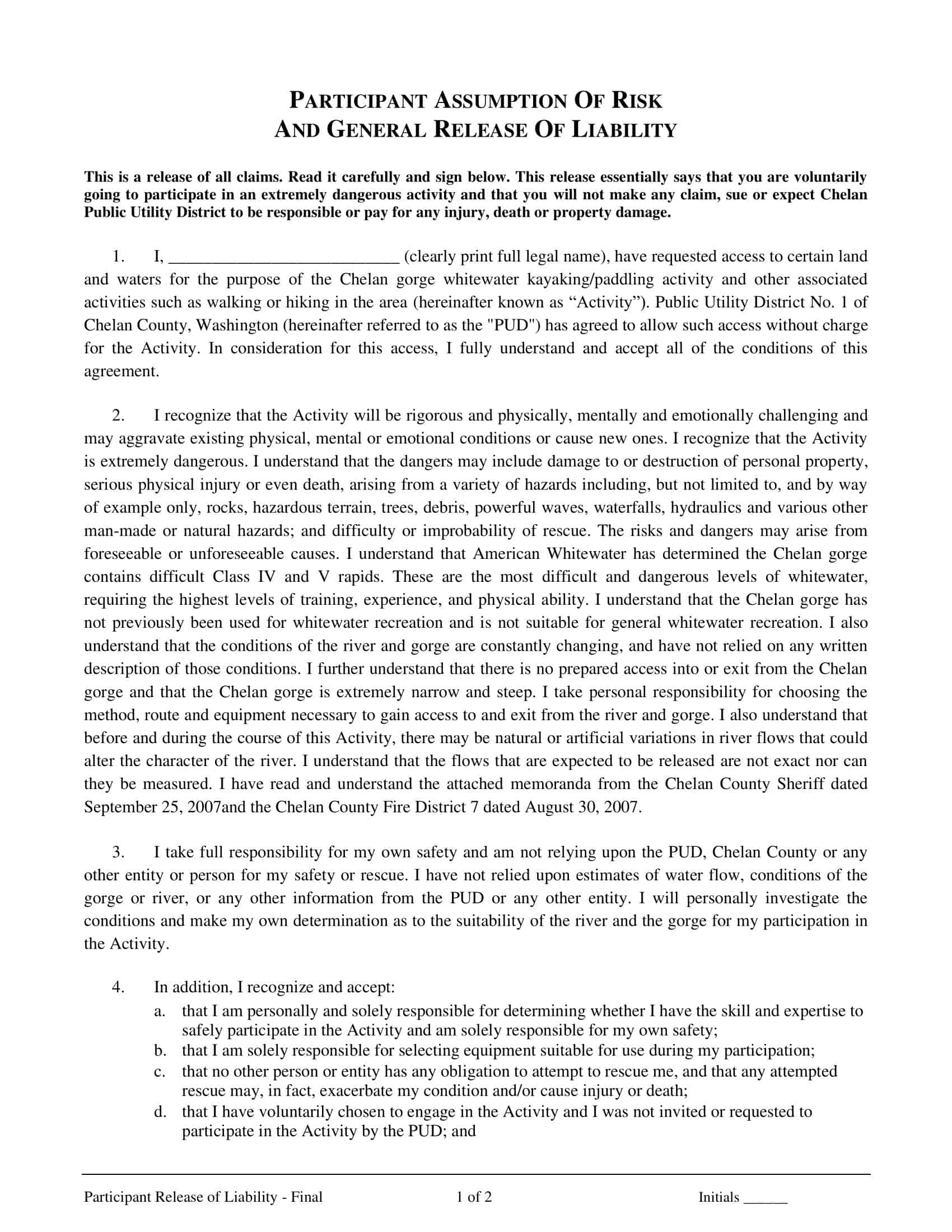

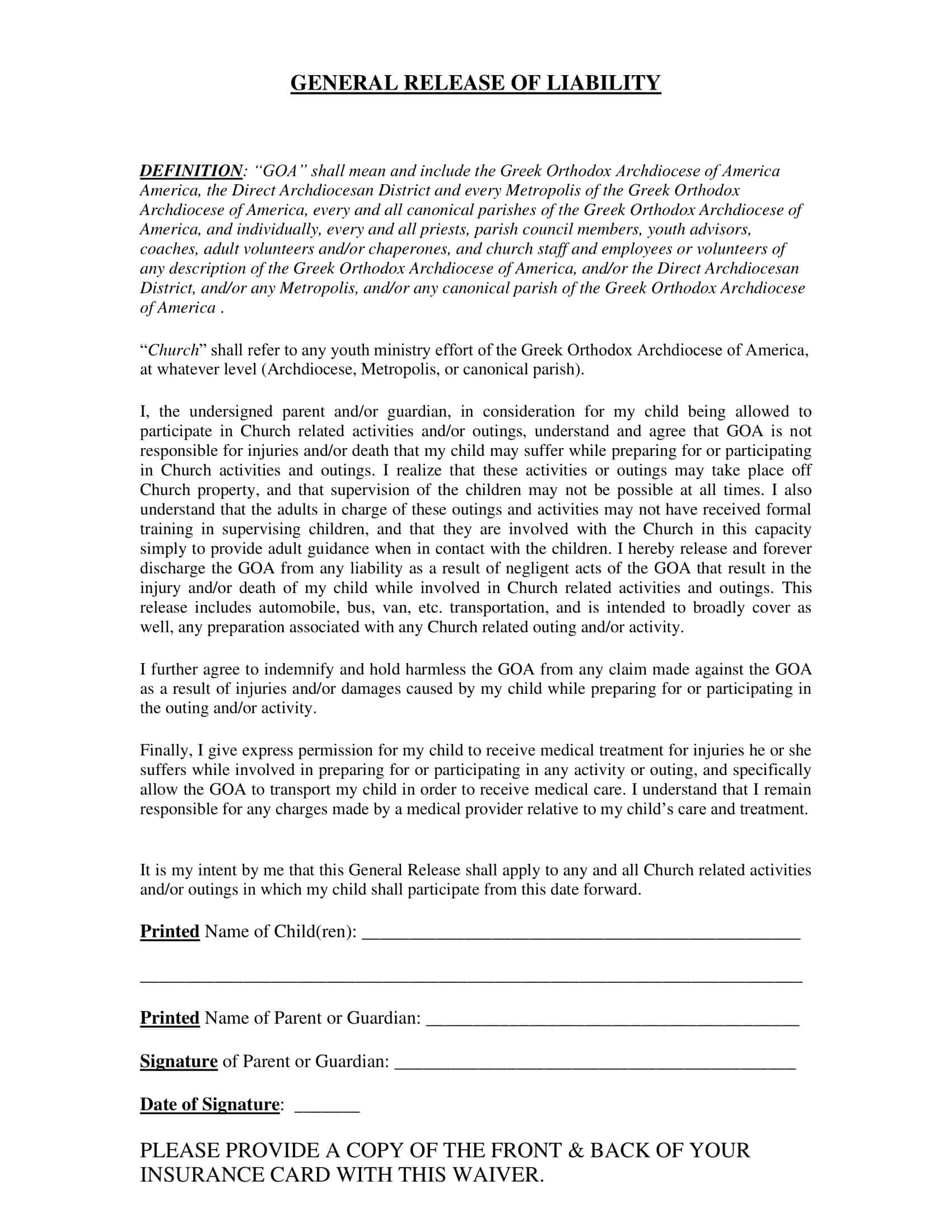


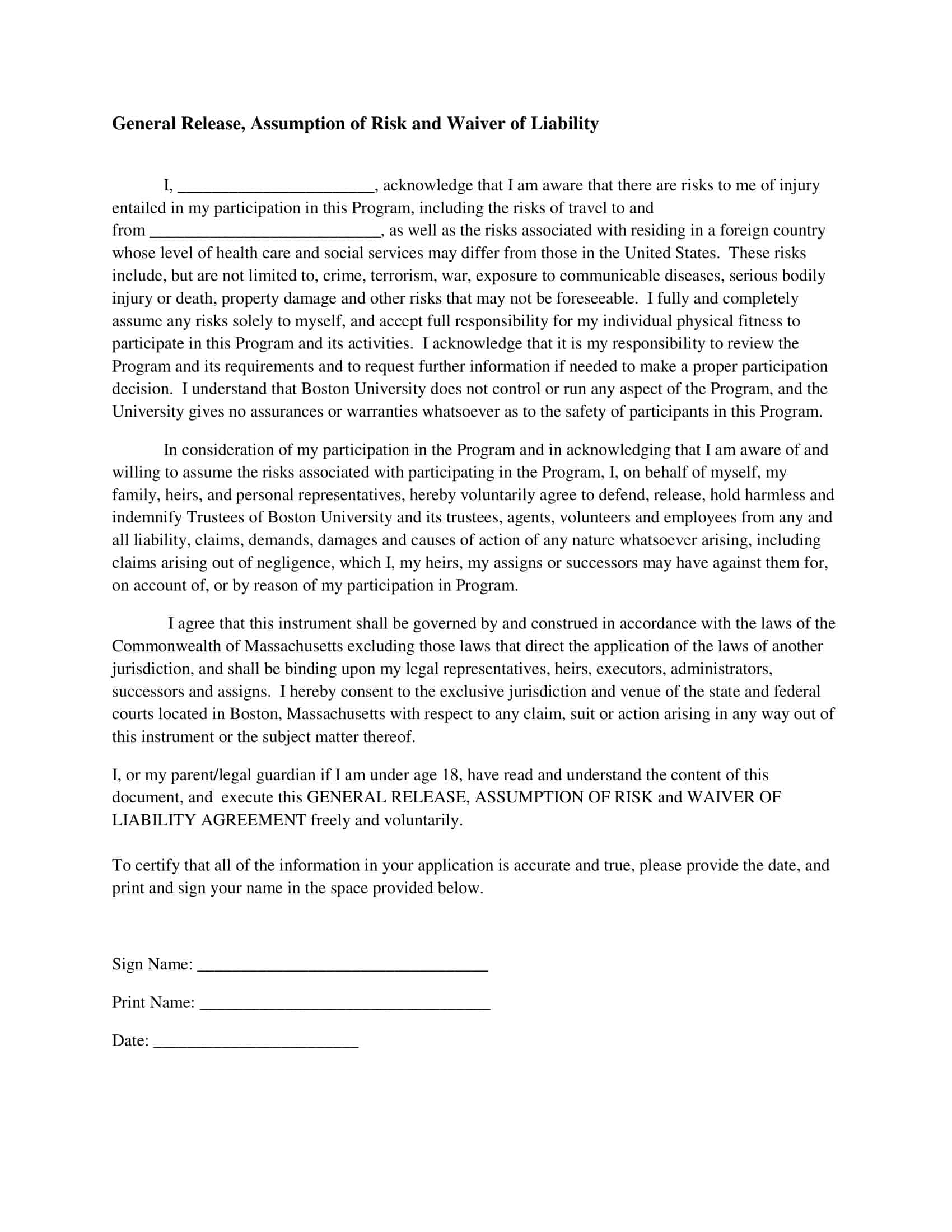





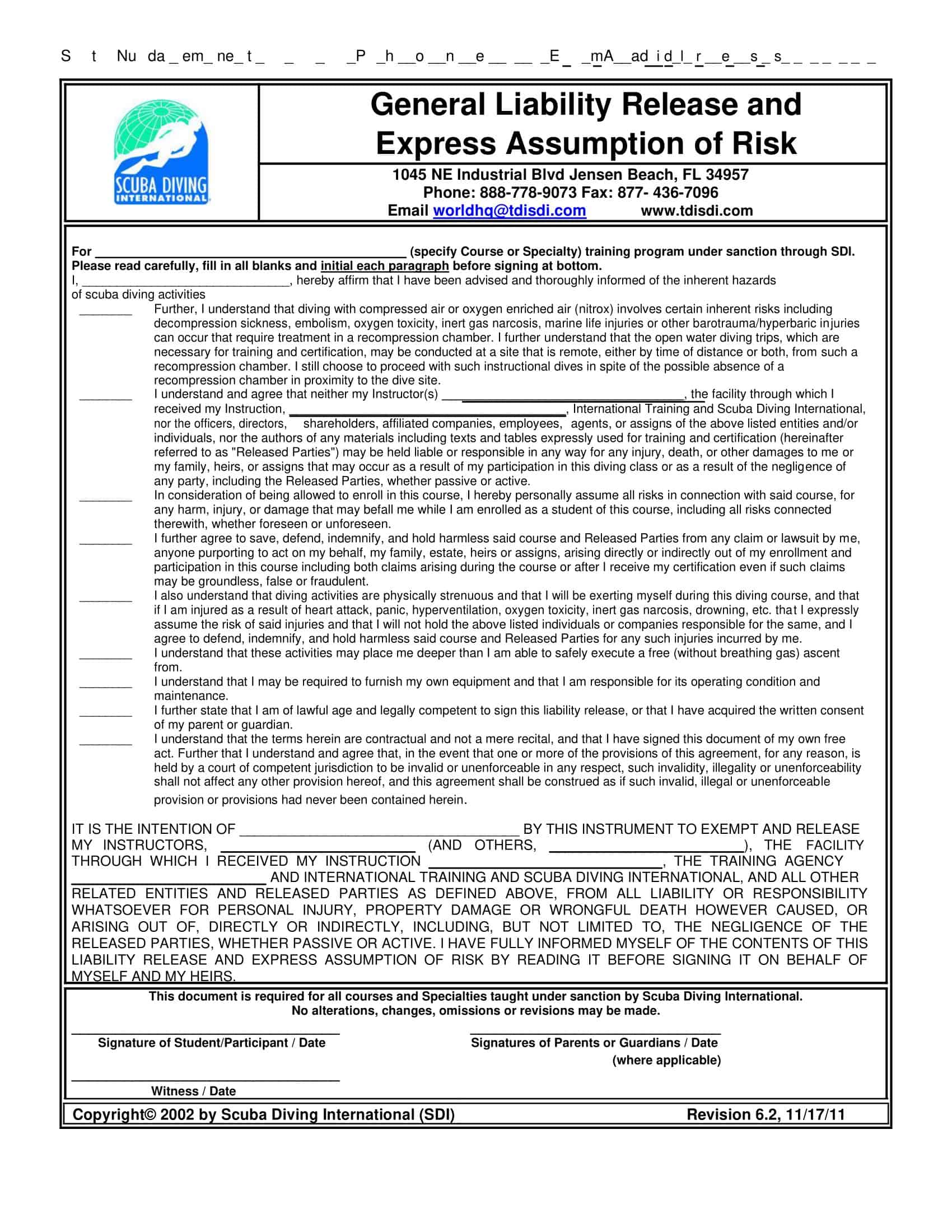
![Free Printable Location Release Form Templates [PDF, Word] Property / Example 1 Location Release Form](https://www.typecalendar.com/wp-content/uploads/2023/05/Location-Release-Form-1-150x150.jpg)
![Free Printable Roommate Agreement Templates [Word, PDF] 2 Roommate Agreement](https://www.typecalendar.com/wp-content/uploads/2023/06/Roommate-Agreement-150x150.jpg)
![Free Printable Credit Card Authorization Form Templates [PDF, Word, Excel] 3 Credit Card Authorization Form](https://www.typecalendar.com/wp-content/uploads/2023/06/Credit-Card-Authorization-Form-150x150.jpg)
